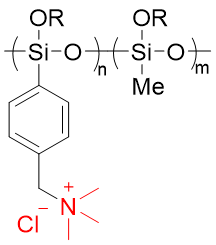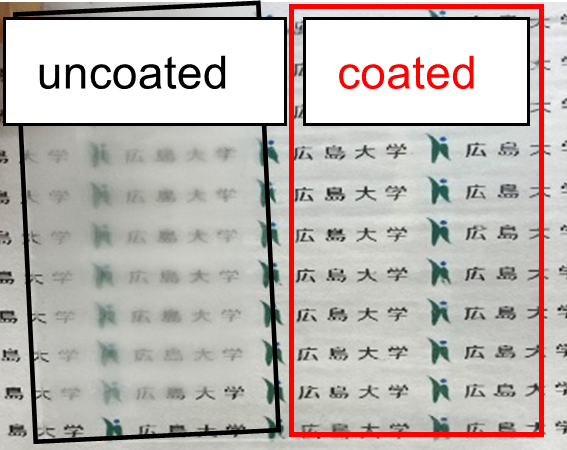Research Overview
Control of the Electronic State of π-Electron Systems by Element
The construction of organic materials with entirely new frameworks by utilizing the electronic or structural characteristics of various elements, is anticipated to provide a possibility to develop new functions. We aim to create next-generation functional organic materials by controlling the properties and functions of organic materials through innovative molecular design. For example, tricoordinate boron has an empty p orbital, and p-π interactions with adjacent π orbitals can greatly enhance the electron-accepting ability. Additionally, its structural rigidity offers an opportunity to control the conformation when it forms a cyclic structure, enabling the develop new stimuli-responsive chromic materials. Similarly, the spatially expanded σ* orbitals of group 14 heavy atoms, including silicon and germanium, can be utilized to control the electronic states of the π-conjugated system. The heavy atom effect of group 15 bismuth that is the heaviest stable element in the periodic table can improve phosphorescence efficiency. With this element-based strategy, we are developing new types of functional dyes that can be used in organic photoelectron devices and other applications.
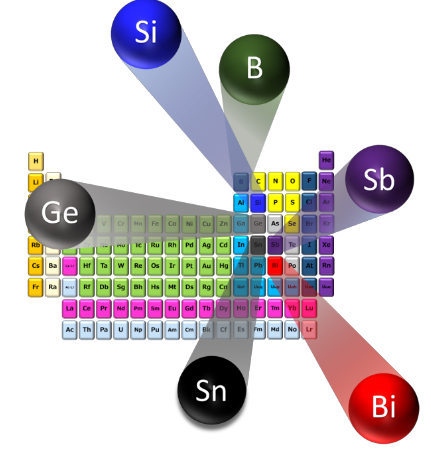
New developments in polysilsesquioxanes
Polysilsesquioxanes have a structure in which one organic group is introduced onto each silicon atom of the inorganic material silica, and have been extensively studied as a typical example of organic-inorganic hybrid materials. We are conducting research and development on robust water separation membranes, carbon dioxide separation membranes, anti-fogging materials, and heat insulating materials by utilizing the characteristics of polysilsesquioxanes, which have the processability and flexibility, and the robustness, based on the organic substituent and inorganic framework, respectively.
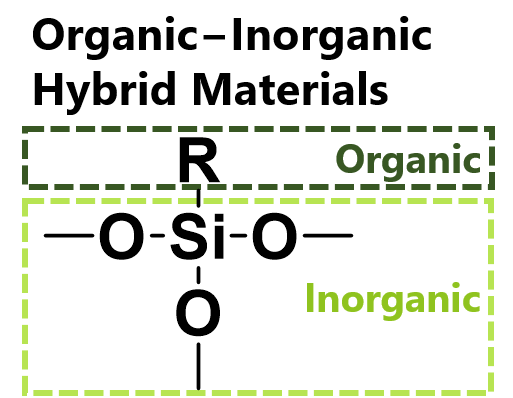
Research Topics
PSQ-based Antifogging Coating Materials with Tetraethylene Glycol Chains and Amine Hydrochloride Salts
This study investigated the effects of incorporating tetraethylene glycol chains and amine hydrochloride salts into amino-functionalized polysilsesquioxane (PSQ) films for antifogging applications. We found that incorporating tetraethylene glycol chains and amine hydrochloride salts into amino-functionalized PSQs improves transparency, surface morphology, and reduction in WU changes against humidity fluctuations. These findings highlight the potential of ammonium- and tetraethylene glycol-modified PSQ films as high-performance antifogging materials with superior hydrophilicity, transparency, and reduction in WU against humidity fluctuations.
For detail, see:10.1021/acsaenm.5c00168

ML for Fluorescent Metalloles
Organic luminescent compounds have been extensively studied for applications in imaging, sensing, and electroluminescent materials. In this study, we developed a machine learning-based prediction model for the fluorescence quantum yields of metalloles, being useful for the screening of novel fluorescent material candidates.
For details, see:10.3390/molecules30081686

PSQ-based Heat-resistant Thermal Insulators
Heat insulators are key materials for efficient energy use and reduction of CO2 emissions. Recently, we examined cross-linked polymethylsilsesquioxane (MSQ) for use as the basic structure of heat-resistant insulation materials. In this study, we prepared MSQs with different cross-linking units and examined the effects of their structures on the heat resistance and heat insulation properties.

For details, see: 10.1038/s41428-024-00953-2
Unsymmetrical Dithienogermole as a New Electron Donor Unit
Group 14 metalloles have attracted much attention as core structures of conjugated functional materials. In this work, we prepared dithieno[3,2-b:4,5-c’]germole as a new unsymmetrically condensed dithienogermole. Conjugated donor–acceptor compounds with the unsymmetrical dithienogermole exhibiting red fluorescence were also prepared.
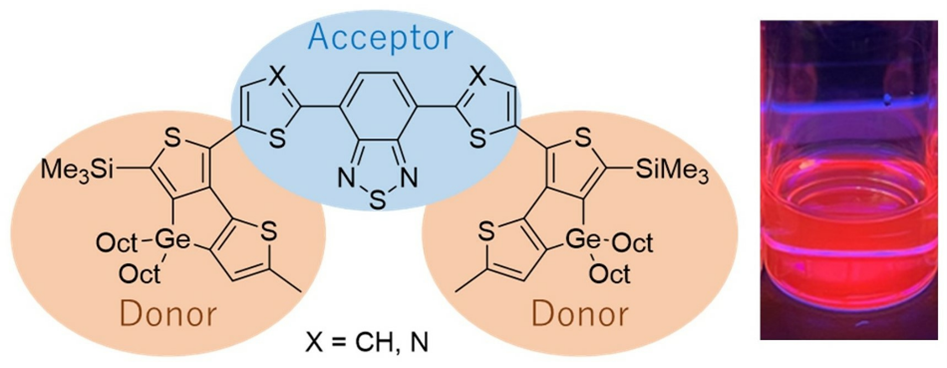
For details, see: 10.3390/molecules29153553
Thienotriazologermole as a New Electron Acceptor Unit for D-A Systems
Germoles and siloles unsymmetrically condensed with heteroaromatic units are attracting much interest. In this study, compounds containing a triazologermole core unit condensed with a benzene or thiophene ring were prepared. Triphenylamine-substituted thienotriazolegermole was also prepared, with an effective extension of conjugation. Triphenylamine-substituted thienotriazolegermole showed clear solvatochromic properties in photoluminescence measurements, suggesting photo-induced intramolecular charge transfer.
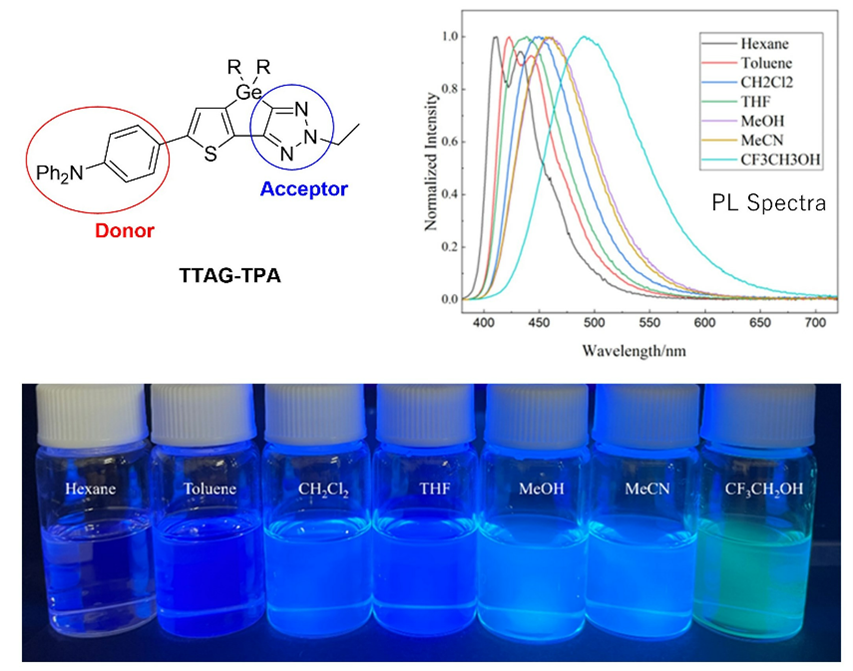
For details, see: 10.3390/molecules29112684
PSQ-based CO2 Separation Membranes
New polysilsesquioxane (PSQ)-based CO2 separation membranes with succinic anhydride and monoalkylurea units as thermally degradable CO2-philic units were prepared. The succinic anhydride and monoalkylurea units underwent thermal degradation to form ester and dialkylurea units. The effects of thermal degradation on the performance of the obtained membranes were investigated, indicating that the controlled thermal degradation of the organic units provides a new methodology for possible tuning of the CO2 separation performance of PSQ membranes.
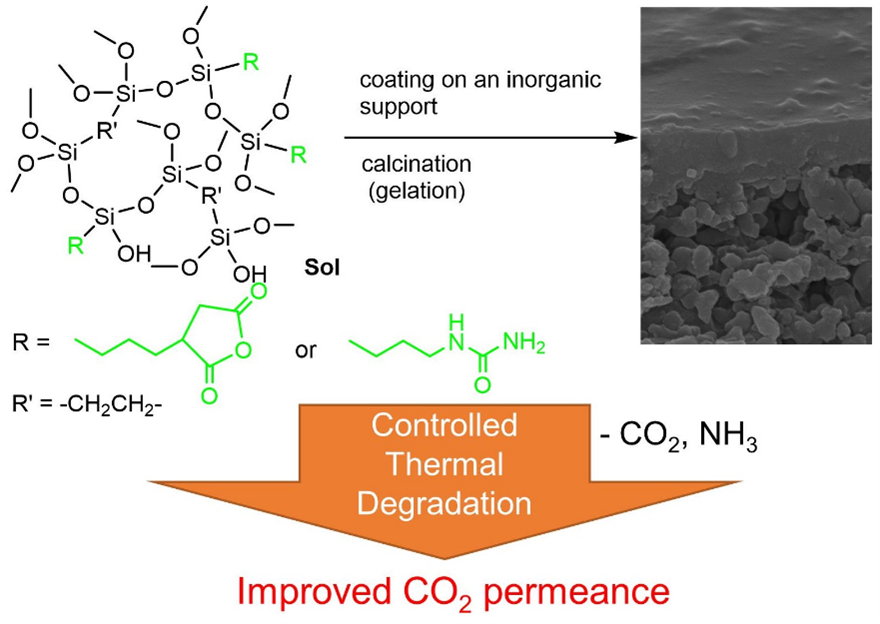
For details, see: 10.3390/separations11040110
Thiophene-fused Bistricyclic Aromatic Enes
Bistricyclic aromatic enes (BAEs) are compounds consisting of two tricyclic structures linked by a C=C double bond, and they can adopt multiple conformational isomers such as twisted and anti-folded conformers. We have found that by fusing thiophene rings to the BAE framework, it is possible to control the energy of these conformational isomers. For example, BAEs containing carbonyl units stabilize in the twisted conformer and function as n-type semiconductors. We have also demonstrated that the thermodynamic stability of conformers of BAEs can be precisely controlled by introducing various heteroatoms.
For details, see: 10.1039/D4CC02943G / 10.1002/chem.202302370 / 10.1039/D4SC06150K
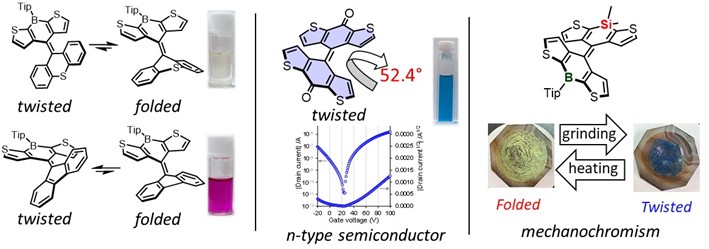
Boron-based Photoluminescent Materials
Solid-state luminescent materials are critical for a wide range of applications, including organic light-emitting diodes (OLEDs), data storage devices, and security inks. Among emissions, phosphorescence, which is emission from an excited triplet state, has a long lifetime and is particularly important in the fields of OLEDs and bioimaging. Phosphorescence is generally efficiently emitted only from materials containing precious and heavy metals such as iridium and platinum. We have developed a phosphorescent material free of any heavy metals, consisting of a compound called borepin. This compound features a boron-containing, unsaturated seven-membered ring fused with thiophene rings. In its crystalline state, it exhibits red phosphorescence, and we revealed that its photoluminescence properties are significantly influenced by the non-planar structure of borepin and the aryl group attached to the boron atom.
For details, see: 10.1039/D4SC01184H
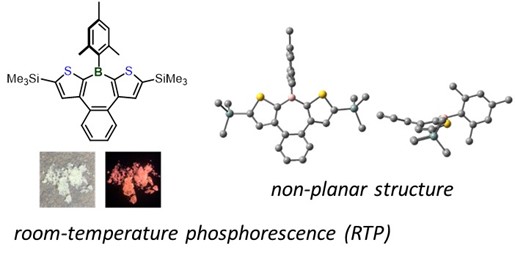
Quaternary Ammonium-functionalized PSQs for Antifogging Coating
To develop antifogging materials with improved antifogging properties and scratch resistance, polysilsesquioxane films containing quaternary ammonium groups were prepared through a sol–gel reaction of [4-(chloromethyl)phenyl]triethoxysilane followed by quaternization. These quaternary ammonium-functionalized polysilsesquioxane films exhibit high water uptake, scratch hardness, and transparency, making them promising candidates for antifogging coatings.
For details, see: https://doi.org/10.1039/D4LP00322E
